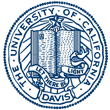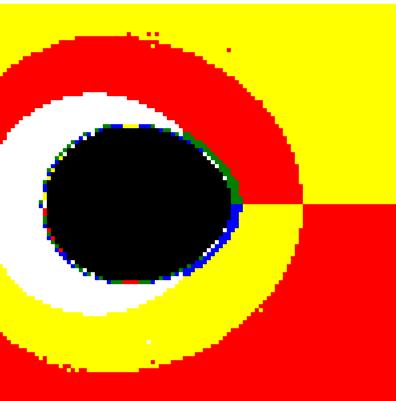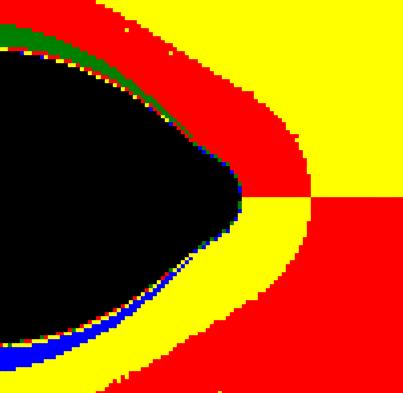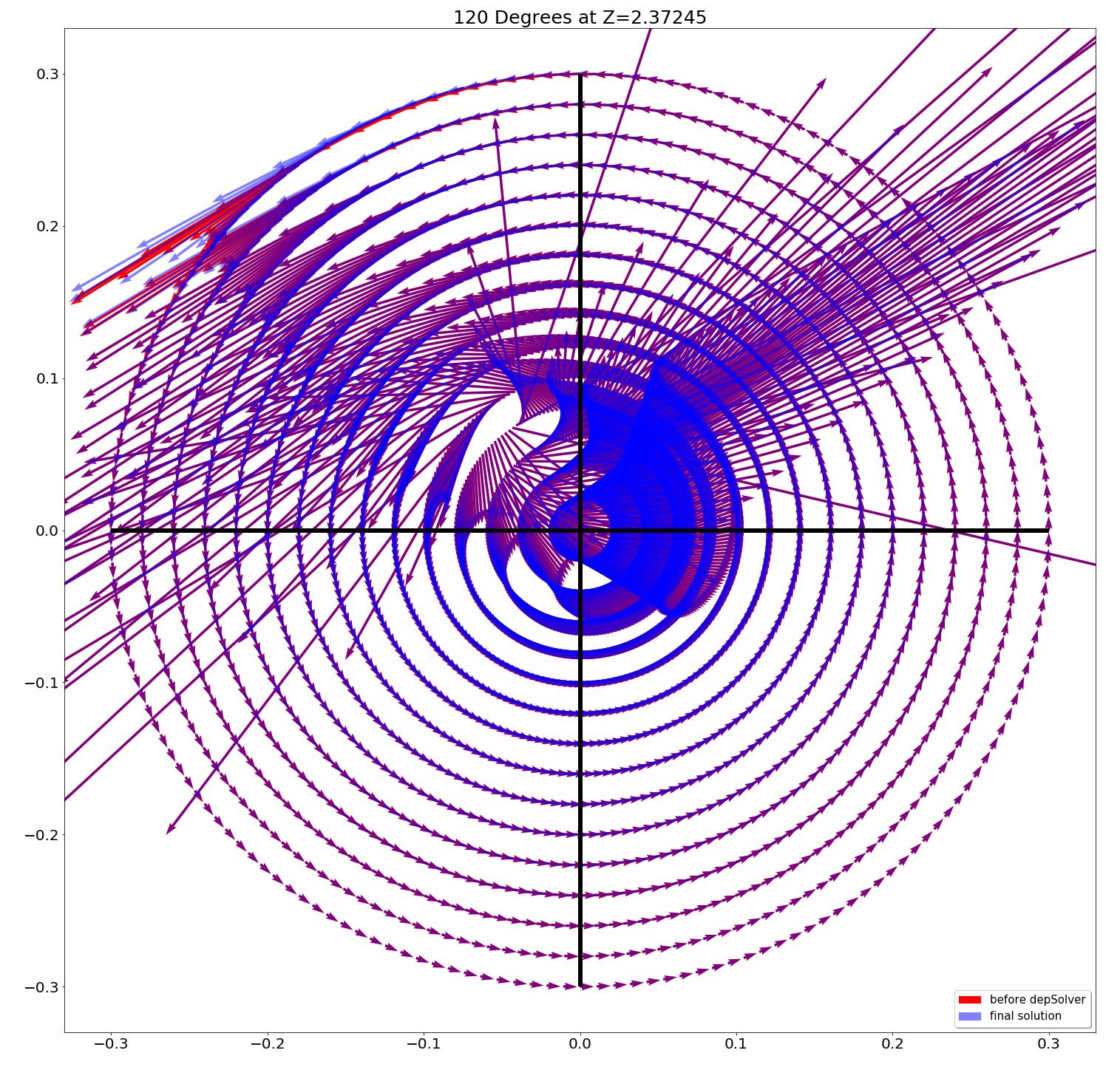
This REU program was funded through NSF PHY-1852581.
Students' names link to their final papers. Advisors' names link to the research group web pages.

Coupled cavities, as in the Tavis-Cummings-Hubbard model which Amelia Broman used.
Brianna Billingsley (Washington and Jefferson College; advisors Valentin Taufour and Richard Scalettar) studied trends in magnetic behavior for crystals with different lattice structures. The Ising model sets up spin-1/2 particles in a lattice, mimicking the atomic spins in a crystal. The particles are assumed to orient only up or down relative to a particular axis, and interactions between neighboring particles can favor their aligning in the same direction. She wrote Monte Carlo code in Python to find various quantities, including the magnetic susceptibility, which shows how easily spins reorient if an external magnetic field is applied, and the specific heat, which can indicate a phase transition. One of the main discoveries was that the Curie temperature is essentially determined by the number of nearest neighbors in the lattice.
Amelia Broman (Carleton College; advisors Richard Scalettar and Marina Radulaski) studied how a quantum state can be transferred spatially across an array of cavities containing trapped photons. Simulations were carried out in Python. She used the Tavis-Cummings-Hubbard model, which consists of cavities that can host an electromagnetic field. Photons can be absorbed and emitted in each cavity, and can hop between adjacent cavities. This is an important model for how future qubits may be able to be entangled with one another via light-matter interactions.


Images of four-dimensional black holes of different rotation rates
David Carcamo (The Johns Hopkins University; advisor Mukund Rangamani) focused on understanding black holes in anti-de Sitter (AdS) spacetime. AdS spacetime has a negative cosmological constant, in contrast to our universe. However, there is a formal correspondence between the behavior of a black hole in AdS spacetime and conformal field theory, which has been exploited to gain better physical insight into a number of theoretical problems ranging from cosmology to condensed matter physics. This project specifically developed a method to 'image' AdS black holes by determining how the paths of photons travelling near a black hole are bent, in four and five dimensions of spacetime.
Nuclear magnetic resonance (NMR) measurements involve displacing spins from alignment with a magnetic field and tracking their orientation as they relax back to the aligned configuration. In condensed matter systems, this sometimes reveals inhomogeneous behavior, which may arise due to complex competing interactions. In such cases, the relaxation dynamics often exhibits a distribution of relaxation rates, rather than a single time scale. Hyeonseon Choi (SUNY Polytechnic Institute, College of Nanoscale Science and Engineering; advisor Nicholas Curro) investigated a novel approach to obtain this distribution of relaxation rates from experimental data. This project evaluated the effectiveness of the inverse Laplace transform technique for various known distributions, and estimated how much experimental precision is necessary to accurately obtain the distributions.
Dhruva Karkada (University of Texas, Austin; advisor Jim Crutchfield) investigated how quantum information is lost to a thermal bath through decoherence. An isolated quantum bit will undergo unitary evolution under the Schrodinger equation, but in real systems it is also coupled with an environment that gives rise to stochastic dynamics. This behavior is often modeled in terms of a density matrix, and the project developed methods to visualize the dynamics in Hilbert space and how the information content evolves.

Velocity field of a bent superfluid vortex, along a particular planar slice of space
The behavior of fluids can be modelled numerically with the Navier-Stokes equation, which includes the dissipative effects of fluid viscosity. In a superfluid the viscosity vanishes, leading to much simpler equations and novel physical effects. In particular circular motion of the fluid occurs only through vortices with quantized values of angular momentum. These vortices define the entire velocity field of the helium, which changes as the vortices themselves move within the fluid. Colleen Lindenau (Stockton University; advisor Rena Zieve) studied the behavior of a vortex in a specific geometry used for experimental measurements. She numerically solved the Laplace equation to satisfy the boundary conditions governing the fluid flow. Her results were promising for being able to incorporate the Laplace solution, in a numerically practical manner, into a simulation of vortex dynamics.